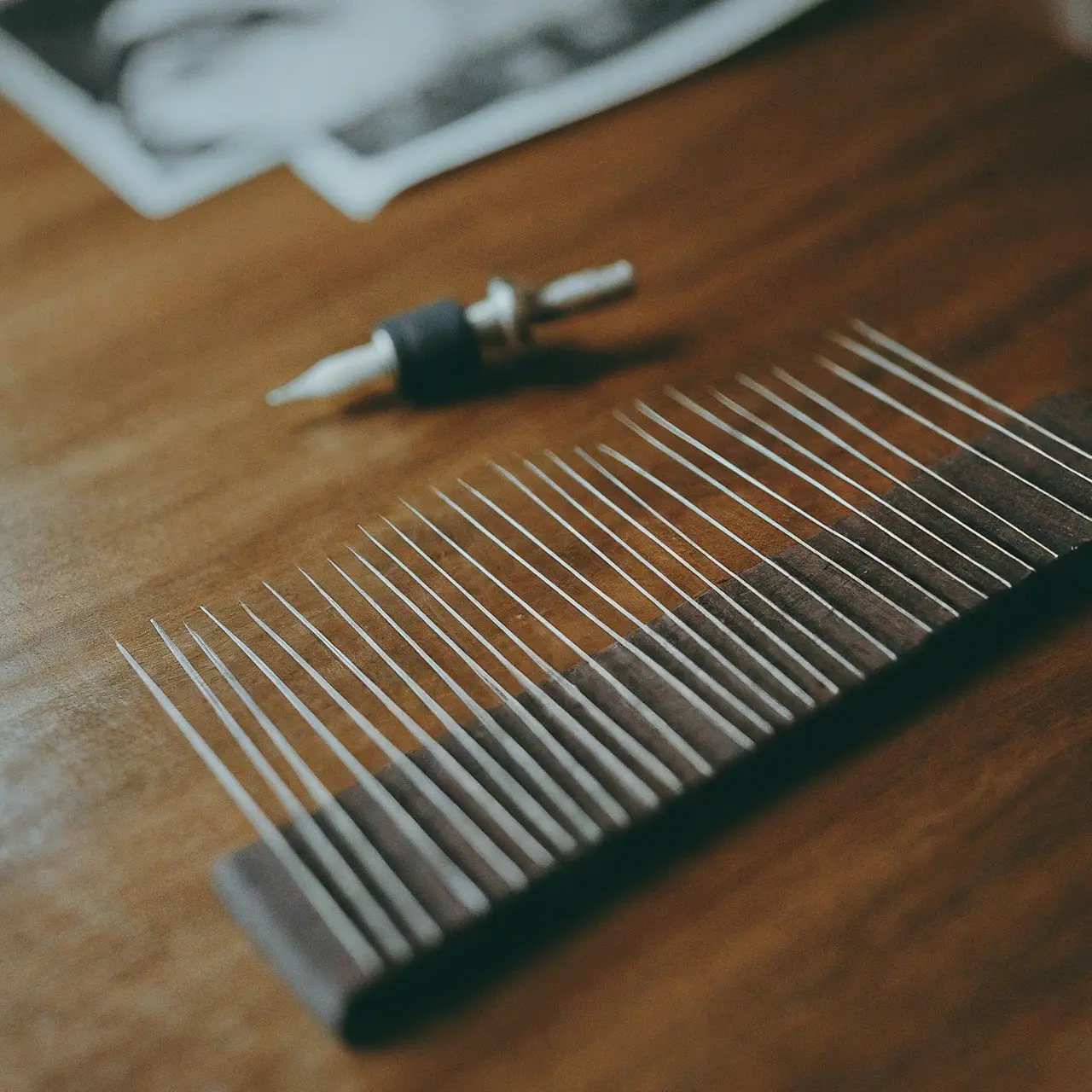Aug 29th 2024
How to choose the right linert for your tattooing style, tight, bold or bugpin
Choosing the right tattoo needles is crucial for achieving the perfect ink on skin. Whether you aim for tight, bold lines, or fine detail work using bugpin liners, understanding their differences and applications can make all the difference. In this guide, we'll simplify the complexity behind tattoo needles to help you make an informed choice.
Understanding Tattoo Needle Basics
Tattoo needles are far from being a one-size-fits-all affair. Each needle type brings a certain quality and functionality to the tattooing process. At their core, tattoo needles are a collection of fine pins, arranged in different patterns to accomplish varied artistic effects. Whether your art calls for delicate shading or bold linework, the needle you choose directly impacts the ink's application and the final look of the tattoo.
Understanding the diameter of the needle wire is the first step. The diameter affects ink flow and skin impact - finer diameters offer precise lines and less skin trauma, ideal for detailed work like portraits or miniatures. Heavier diameters allow more ink to flow, speeding up the coloring process, making them suitable for shading and packing color.
Needle configurations, or how the pins are organized, play a huge part in their function. Liners are tightly grouped for fine lines, while shaders are spaced out for coloring. Hollow, flat, and magnum needles each serve specialized roles, from bold lines to detailed shading effects.
Decoding the Liner Needle: Tight, Bold, and Bugpin
Liner needles like tight, bold, and bugpin configurations determine the precision and visibility of the lines they produce. Tight round liners, packed closely, are perfect for creating crisp, thin lines. Bold liners, with their larger diameter, allow for a more pronounced effect, laying down thicker lines with each pass. Bugpin liners, known for their ultra-fine pins, offer exceptional control for minute details, perfect for the trending fine line tattoos.
Choosing between these liners depends on the tattoo's design elements. Fine line work, popularized on social media and favored for its subtle elegance, requires the precision of bugpin needles. Meanwhile, traditional or tribal tattoos, with their characteristic bold outlines, benefit from the robust lines created by bold liners.
Matching Your Style with the Right Needle
The journey to selecting the right needle starts with understanding your unique tattooing style. If you lean towards intricate, photorealistic pieces, bugpin liners will likely be your go-to. Their narrow construction offers unparalleled precision for capturing the finest details.
For artists whose style demands boldness and depth, choosing needles like the #12 standard pins provides the thickness needed for impactful linework and color fills. The aesthetic of your tattoo dictates the needle's characteristics, from diameter to configuration.
The Impact of Needle Choice on Tattooing Techniques
The relationship between needle choice and tattooing technique cannot be overstated. Each needle type influences not just the look of the tattoo but the artist's approach to skin. For instance, shading techniques vary significantly when using a round shader compared to a magnum, with the former allowing for detailed dot work and the latter suited for broad, soft shading.
Needle taper, the distance from a needle's tip to its thickest point, affects ink flow. Longer tapers offer less ink flow, ideal for delicate, detailed work, whereas shorter tapers allow more ink to the skin, suitable for bold lines and coloring. Understanding these nuances is crucial for mastering various tattooing techniques.
Considerations Before Making Your Selection
Before settling on a needle, consider the skin area you'll be working on and the complexity of the design. Detailed designs on delicate areas like the wrists or ankles benefit from the precision of bugpin needles, while more straightforward, larger designs may call for the boldness of standard liners.
Factor in your comfort and experience with the needles. While it's valuable to experiment, working with needles that complement your technique enhances both the tattooing process and the end result. Always weigh your personal practice against the project's requirements.
Experimenting with Different Liners
The art of tattooing is as much about technique as it is about experimentation. Trying out different liners opens up a new avenue of artistic expression. Fine line tattoos, for example, have seen a surge in popularity due to the unique looks achievable with bugpin needles. Similarly, artists striving for a vintage or bold aesthetic find success with larger diameter needles.
Remember, the correct needle is the one that feels right in your hands and aligns with your artistic vision. The best way to discover your preference is by experimenting with different types, observing the effects they produce on skin, and adjusting based on feedback and personal comfort.
Frequently Asked Questions
What needle should I use for fine detail work? For incredibly detailed pieces, opt for bugpin needles. Their small diameter allows for exceptional precision, making them ideal for fine line tattoos.
Can I use the same needle for lining and shading? While some needles, like round shaders, offer versatility, choosing the right needle for the job — a liner for outlines and a shader for filling — usually yields the best results.
How do I decide between tight, bold, and bugpin liners? Consider the style and detail level of the tattoo. Tight liners are great for fine, precise lines, bold liners for impactful, thick lines, and bugpins for detailed, intricate work.
Wrapping Up on Tattoo Needles
Selecting the appropriate liner for your tattooing style isn't just about the outcome; it's about enhancing your comfort and confidence as an artist. Whether you opt for tight, bold, or bugpin liners, remember, it's your personal touch that brings tattoos to life. Experimentation can also be key, so don't shy away from trying different liners to find what suits your artistry best.

